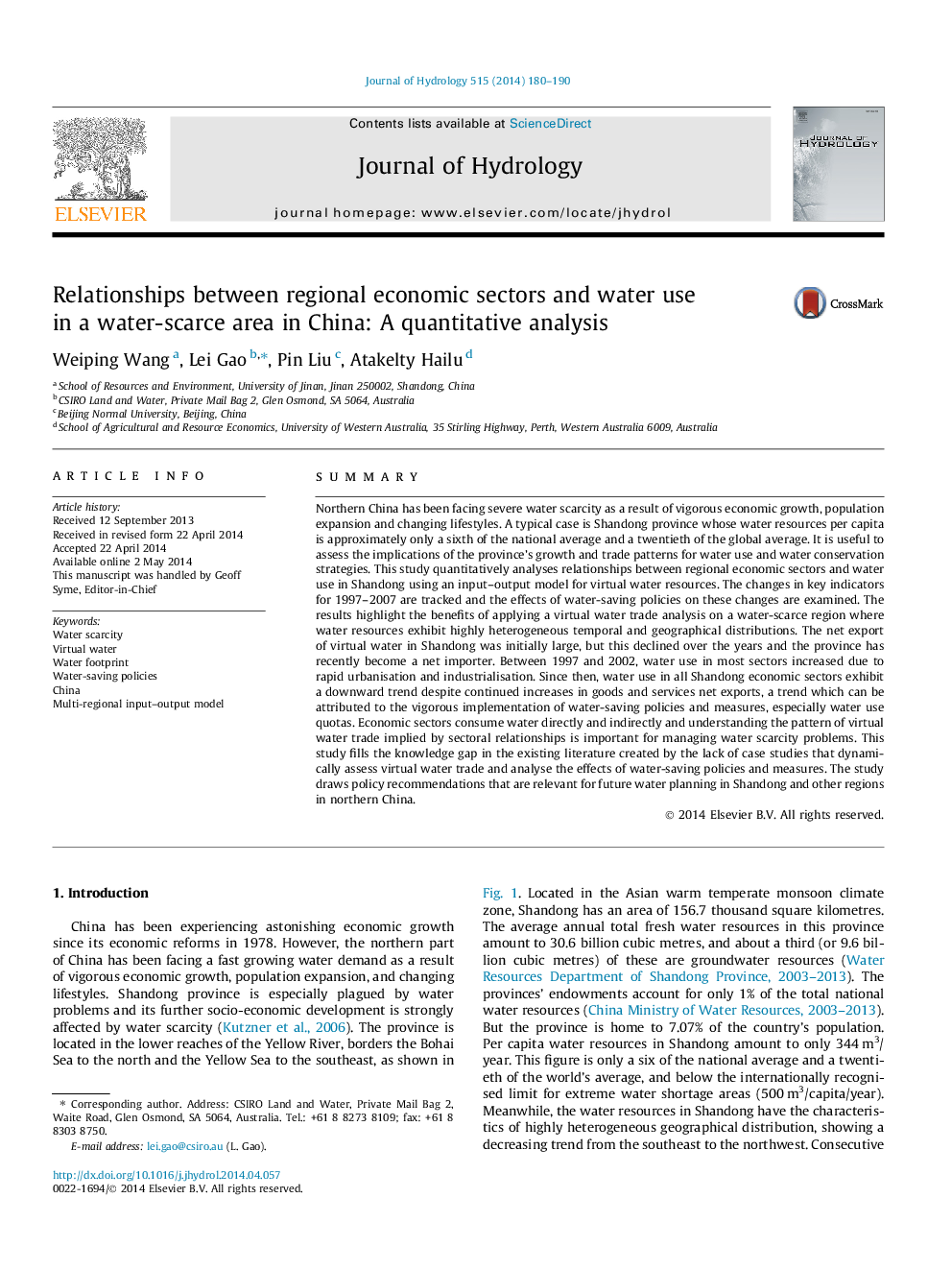| Article ID | Journal | Published Year | Pages | File Type |
|---|---|---|---|---|
| 6412848 | Journal of Hydrology | 2014 | 11 Pages |
â¢Relationships between regional economic sectors and water consumption are analysed.â¢The changes in water use indicators over a decade are tracked.â¢The effects of water-saving policies on water use indicators are examined.â¢A case study area of virtual water assessment in a water-scarce region.â¢The produced policy recommendations are useful for water planning in northern China.
SummaryNorthern China has been facing severe water scarcity as a result of vigorous economic growth, population expansion and changing lifestyles. A typical case is Shandong province whose water resources per capita is approximately only a sixth of the national average and a twentieth of the global average. It is useful to assess the implications of the province's growth and trade patterns for water use and water conservation strategies. This study quantitatively analyses relationships between regional economic sectors and water use in Shandong using an input-output model for virtual water resources. The changes in key indicators for 1997-2007 are tracked and the effects of water-saving policies on these changes are examined. The results highlight the benefits of applying a virtual water trade analysis on a water-scarce region where water resources exhibit highly heterogeneous temporal and geographical distributions. The net export of virtual water in Shandong was initially large, but this declined over the years and the province has recently become a net importer. Between 1997 and 2002, water use in most sectors increased due to rapid urbanisation and industrialisation. Since then, water use in all Shandong economic sectors exhibit a downward trend despite continued increases in goods and services net exports, a trend which can be attributed to the vigorous implementation of water-saving policies and measures, especially water use quotas. Economic sectors consume water directly and indirectly and understanding the pattern of virtual water trade implied by sectoral relationships is important for managing water scarcity problems. This study fills the knowledge gap in the existing literature created by the lack of case studies that dynamically assess virtual water trade and analyse the effects of water-saving policies and measures. The study draws policy recommendations that are relevant for future water planning in Shandong and other regions in northern China.
